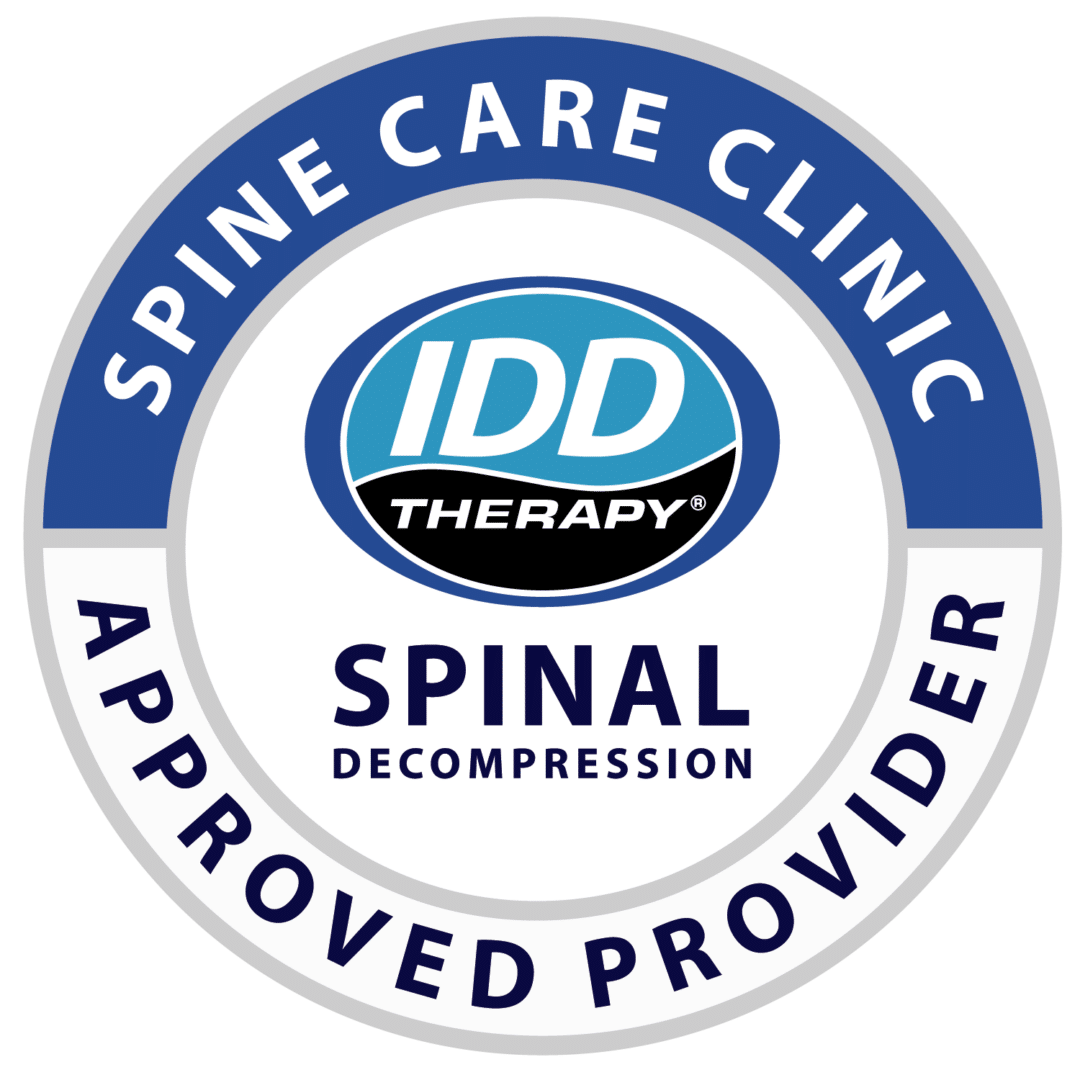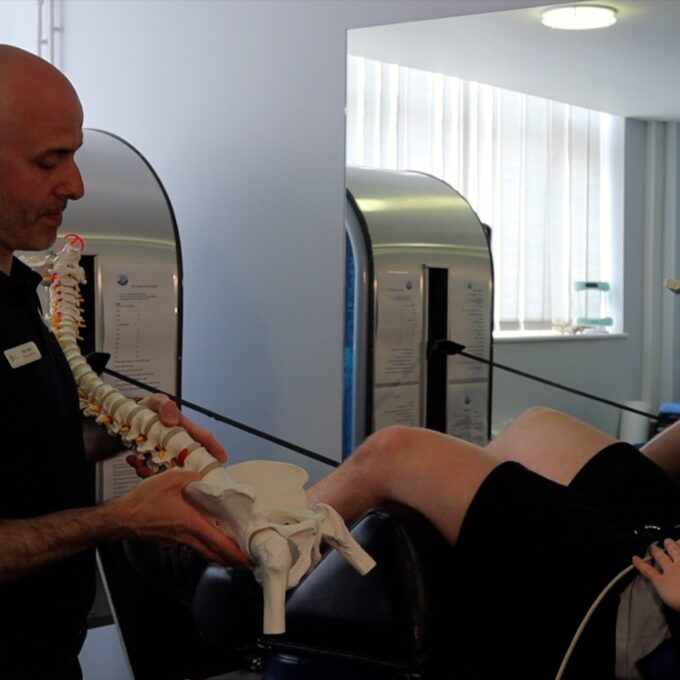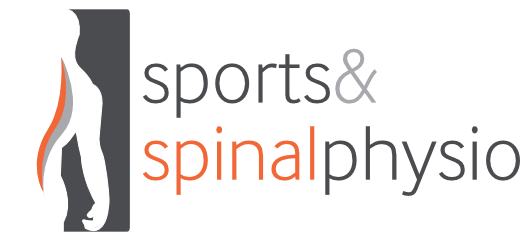IDD Therapy
- Do you have ongoing lower back or neck pain that is preventing you from living your life?
- Is persistent leg pain or sciatica getting you down?
- Have conventional therapies or medical interventions failed to help you?
If you answered yes to any of the above then IDD Therapy Spinal Decompression could be the treatment solution for you.
Proudly featured in…
Who is IDD Therapy suitable for?
- Patients with Disc Pathologies – disc bulge, disc herniation, disc protrusion, disc degeneration
- Patients with spinal wear or degeneration often termed spondylitis
- Patients with mild to moderate spinal stenosis
- Patients experiencing nerve pain (sciatica or arm pain)
- Patients who have failed to respond to other therapies or medical interventions

How does it work?
After careful assessment to ensure that you are a suitable candidate for IDD, we attach a harness to your chest and pelvis and position you lying down on the IDD table. Fully clothed, you are connected to the computerised machine via the harness. We then input the appropriate settings (dependant on your weight and pathology) into the computer this ensures the tension used in the decompression is correct.
We then start the treatment.
During the treatment you should not experience any pain and only a mild to moderate pulling sensation in the target area. The treatment lasts 25 minutes.
You remain completely relaxed throughout and many patients even go to sleep.
On completion of the treatment we unsecure your harness and return the bed to an upright position for you to step off You may feel some post treatment soreness for which you can use an ice pack to help provide some relief.
“We have been using IDD Spinal Decompression since 2013. Combined as part of an overall programme of care, IDD Therapy is our first choice treatment for unresolved spinal problems because it is targeted to the causes of the problem and importantly, it is non-invasive.”
Benefits of IDD Therapy
Improved Disc Health
Distracting and mobilising the spine in this way creates ‘negative pressure’ at the site of the targeted disc which promotes the movement of water, oxygen and nutrients into the disc space – all of which are required for improved hydration and repair of the degenerative (worn) disc. (4, 6)
Decompression of Disc
Decompressing (distracting and mobilising) an injured or bulging disc can free the surrounding nerves from pressure or irritation which is causing pain. This may result in a reduction or complete resolution of back, neck pain and sciatica. (2)
Decreased Muscle Spasm
By taking pressure off an injured disc and gently stretching the soft tissues, IDD Therapy encourages the spine to become more mobile and the body’s natural healing mechanisms to operate more efficiently (6). Consequently, the pain caused by muscle spasm can be significantly reduced.
Increased Mobility
The IDD Therapy treatment machine (SDS Spina) includes a unique oscillation feature capable of mobilising the disc at the point of maximum distraction (stretch).
Moreover, because it uses a gently-progressing pulling force which mimics the natural contraction of a muscle, the muscle remains relaxed and lengthened throughout the slow and consistent stretch without going into spasm.
By gently working the soft tissues, we aim to improve and create freedom of movement in the joint. Combined with some guidance from our physiotherapists, we improve overall mobility.
Over a programme of treatments, an IDD Therapy patient can become gradually more pain-free and with this, comes an increased confidence to move around more and thus, they are able to gain even more mobility.

Frequently Asked Questions
How many treatments will I need?
We follow the traditional protocol of 20 sessions over a 6-8 week period. When you consider how much time passes in the build up to a problem, it takes time for the treatment to have an effect and reverse the pathology that are causing your symptoms. However we monitor your progress throughout and can adapt / terminate treatment if things are not progressing as we expect they should.
I have had surgery – can I still have IDD?
Yes as long as you have no metal work in your spine and your surgery was over 6 months ago to allow time for full healing before treatment.
Is it painful?
While you are the machine it should not be uncomfortable – You may feel some post treatment soreness but this can be managed with ice therapy and simple analgesics
Do I need an MRI?
Yes you will need an MRI. We use this to assess and plan which spinal segment to treat. It is also important to rule out anything that may not make you suitable for treatment, which are contra-indicated for IDD Therapy. You can request a paper copy of your report from your GP or doctor. If you do not have a recent MRI scan we can refer you for one at our partner imaging centre.
How much does treatment cost?
IDD Therapy Sessions last about 45 -60 minutes and cost £80-90 per session. We advise our patients to see it as a treatment programme (much like other medical treatment programmes) and as such the sessions of treatment are purchased in discounted blocks rather than one off sessions.
Will it work for me?
We have been using IDD Therapy since 2013 and we have had very good outcomes for our patients. There is no such thing as a cure all and for some patients, IDD Therapy may not be able to bring about the changes we want. However we find that as we select the right patient and they commit and engage with the programme we achieve the best results.
More often than not patients have already seen a Consultant however in the event that you fail to respond to treatment and have not then we can refer you for a second opinion. Our priority is your health and wellbeing.
Why should I choose IDD Therapy?
UK clinicians report a good to excellent improvement in 70-80% of their IDD Therapy patients. Moreover, in one study, 86% of IDD Therapy participants experienced a positive outcome with the treatment. (2, 4) We conducted our own study in 2015 and found similar results.
Can I stop?
Of course you can. If things aren’t going to plan you can stop treatment at any time and we will reimburse you the remaining fees.
You should consider IDD Therapy if:
- Your current treatment is not working
- You want to stop taking painkillers
- You are seeking long-term pain relief
- You want to return to normal daily activities
- You are looking to avoid surgery
IDD Therapy is suitable for the following conditions:
- Chronic back and neck pain
- Sciatica
- Referred arm pain (Radiculopathy)
- Trapped or irritated nerves
- Bulging, herniated or slipped discs
- Degenerative disc disease
- Facet joint disease
Want to know more about IDD?
Why not download our free pack.
Next Steps: Use one of our 4 options below to get started...
What Our Patients Say
Finally
If you are still considering what to do or just browsing why not download one of our free guides below.
References
1 Clarke JA, van Tulder MW, Blomberg SEI, de Vet HCW, van der Heijden GJ, Brønfort G, Bouter LM. Traction for low-back pain with or without sciatica. Cochrane Database of Systematic Reviews 2007, Issue 2. Art. No.: CD003010. DOI: 10.1002/14651858.CD003010.pub4.
2 Shealy CN and Borgmeyer V. Decompression, Reduction and Stabilization of the Lumbar Spine: A Cost- Effective Treatment for Lumbosacral Pain. American Journal of Pain Management 1997. 7:63-65
3 Eyerman EL. Simple Pelvic Traction Gives Inconsistent Relief to Herniated Lumbar Disc Sufferers. Journal of Neuroimaging Vol. 8 No. 2 1998.
4 McClure D and Farris B, Intervertebral Differential Dynamics Therapy – A New Direction for the Initial Treatment of Low Back Pain. European Musculoskeletal Review 2006. 45-48.
5 Schaufele MK, Newsome M. Intervertebral Differential Dynamics (IDD) Phys Med Rehab Kuror 2011; 21: 34 – 40
6 C. Norman Shealy, MD, PhD, Nirman Koladia, MD, and Merrill M. Wesemann, Long term effect analysis of IDD Therapy in low back pain. American Journal of Pain Management Vol. 15 No. 3 July 2005
